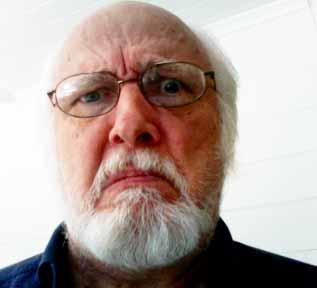Mobile computing, especially devices in the genre of google glasses (cf. Augmented or Mixed Reality), offer an opportunity to test a theoretical insight of electrate theory. Jacques Lacan, for example, proposed that all perception is subjectively framed by unconscious primordial identificatory experiences. Drive and Desire, that is, are irreducibly at work in phenomenal perception. A function of Appiphany is to render accessible this invisible force operating in a target site.
Lacan illustrated his insight into the relationship between virtual and actual experience with the diagram of the inverted bouquet.
 Ellie Ragland explains the lesson: "In Seminar One Lacan reproduced the drawing called 'the experiment of the reversed bouquet,' by which he illustrated the perceptual meeting of Real and Imaginary objects. in fact, he describes the phenomenon of mirage: a Real object is refracted by light rays and presents itself to the eye as if it were Real when, indeed, it is only virtual, or, as Lacan said, Imaginary. In the drawing the vase is Real and the bouquet in it is virtual. In the same way Real objects give rise to the Imaginary creation of similar--but not identical--objets. This conjunction between Real and Imaginary forms occasions the possibility for the free play in which introjection and expulsion alternate with projection and absorption to form the moi by identificatin with objects. The drawing of the reversed bouquet illustrates for Lacan the close inmixing of the Imaginary and Real worlds on a psychic plane" (Jacques Lacan and the Philosophy of Psychoanalysis).
Ellie Ragland explains the lesson: "In Seminar One Lacan reproduced the drawing called 'the experiment of the reversed bouquet,' by which he illustrated the perceptual meeting of Real and Imaginary objects. in fact, he describes the phenomenon of mirage: a Real object is refracted by light rays and presents itself to the eye as if it were Real when, indeed, it is only virtual, or, as Lacan said, Imaginary. In the drawing the vase is Real and the bouquet in it is virtual. In the same way Real objects give rise to the Imaginary creation of similar--but not identical--objets. This conjunction between Real and Imaginary forms occasions the possibility for the free play in which introjection and expulsion alternate with projection and absorption to form the moi by identificatin with objects. The drawing of the reversed bouquet illustrates for Lacan the close inmixing of the Imaginary and Real worlds on a psychic plane" (Jacques Lacan and the Philosophy of Psychoanalysis).This awkward illustration may be replaced now by the basic capacities of mobile devices to inmix virtual information with actual settings. The implications for Appiphany are intriguing.

